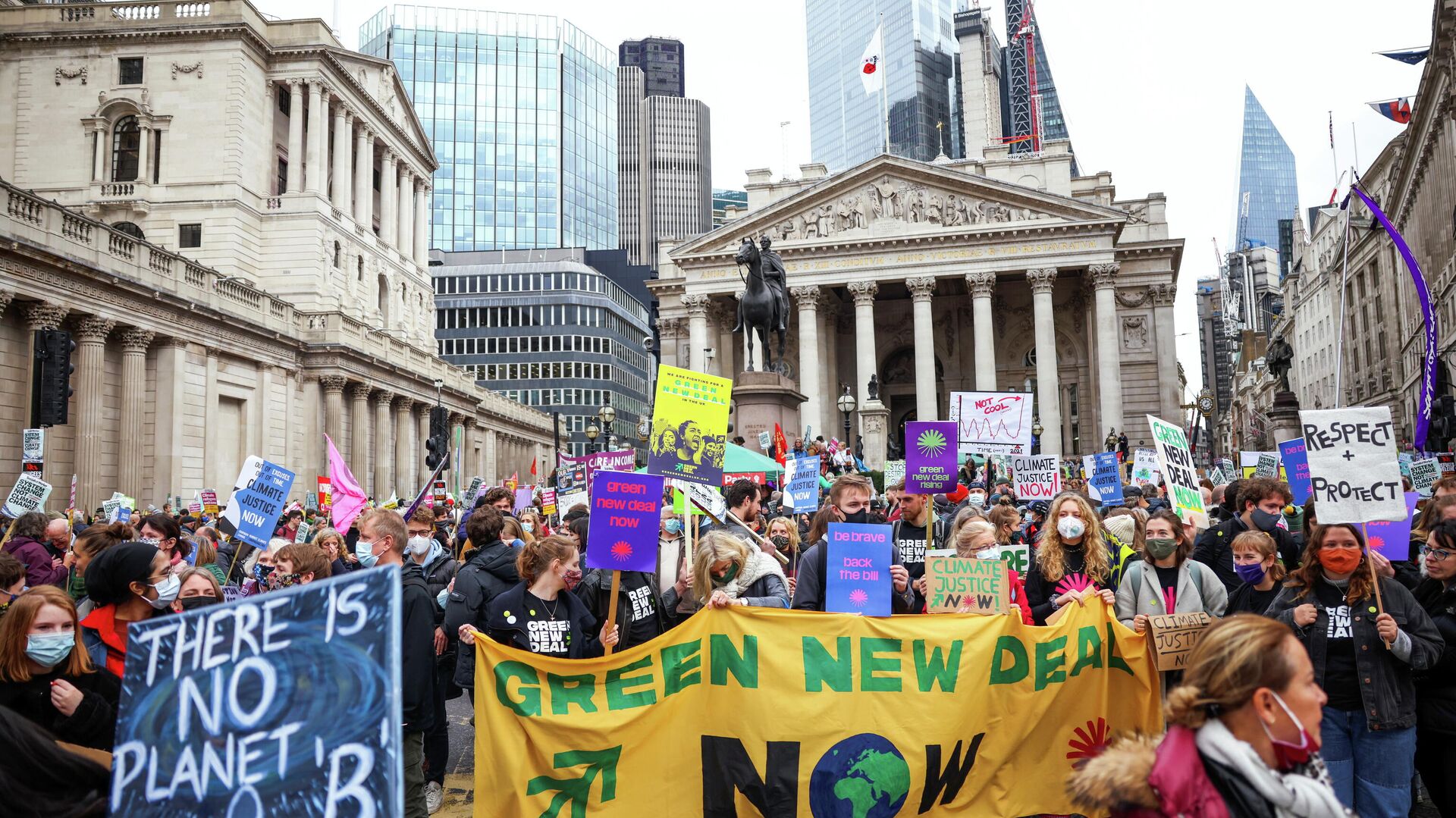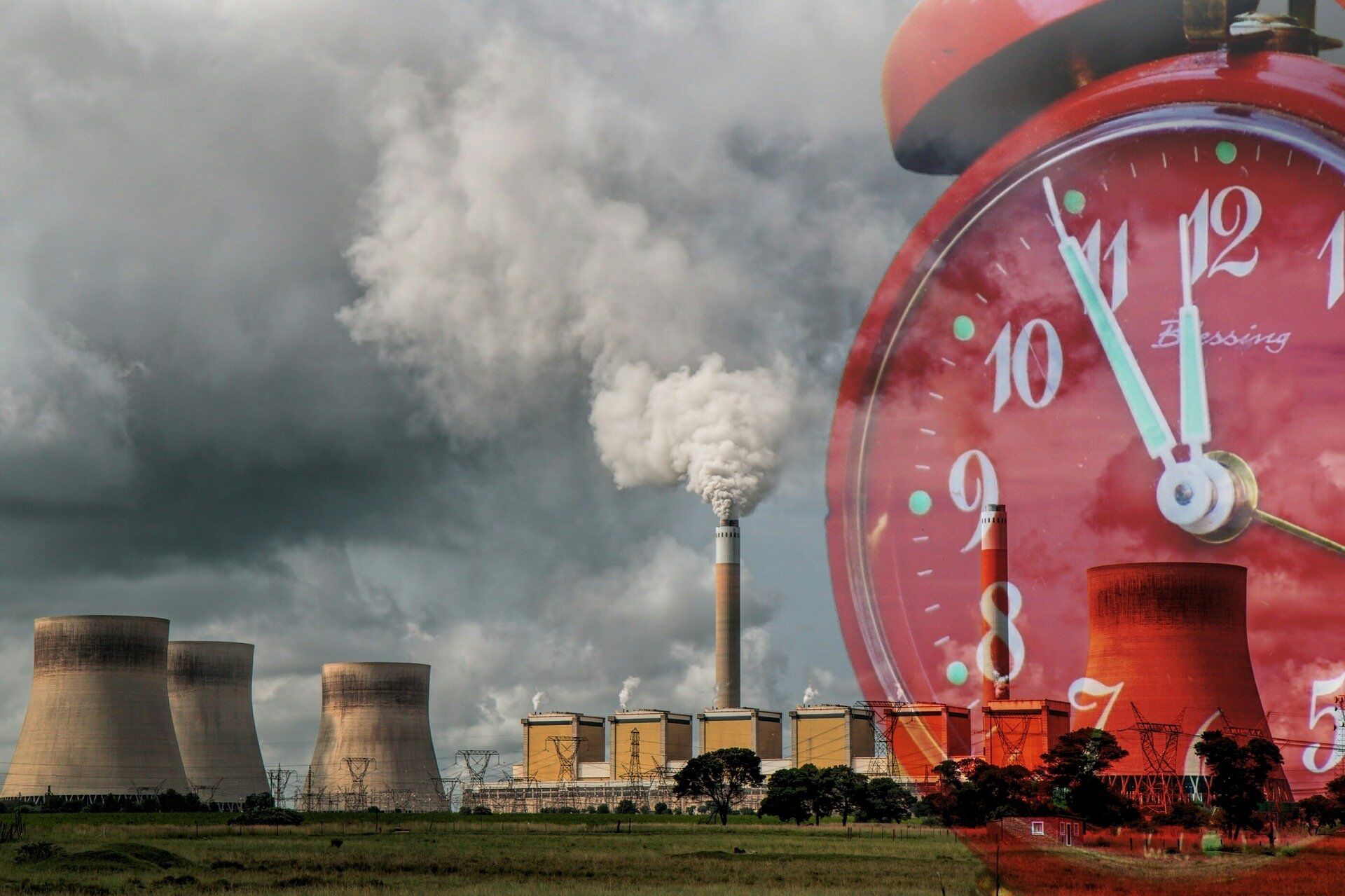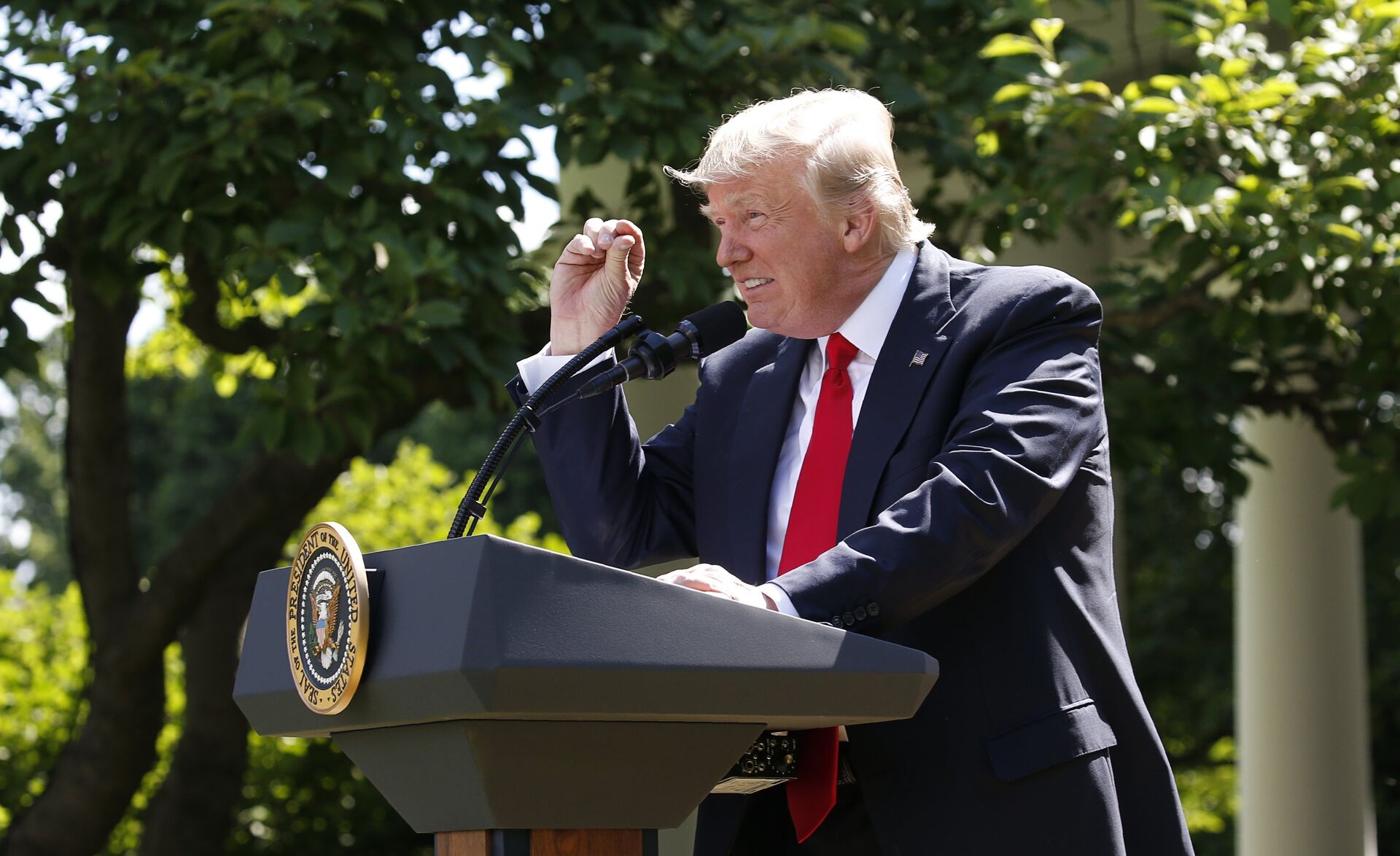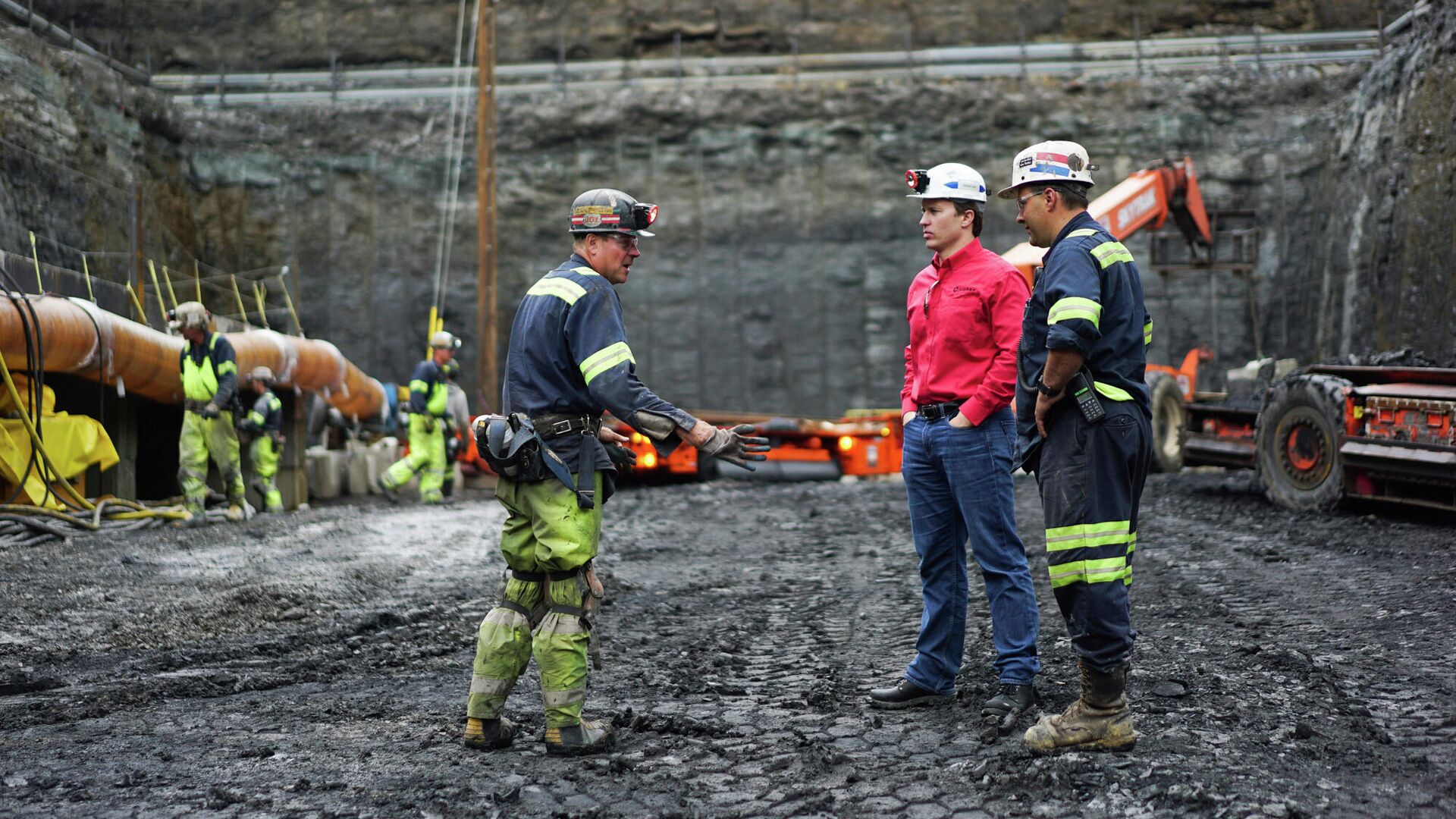Broken Promises: COP26 is Almost Over But Will Glasgow be as Big a Failure as Rio, Kyoto and Paris?
13:17 GMT 08.11.2021 (Updated: 20:11 GMT 19.10.2022)

© REUTERS / HENRY NICHOLLS
Subscribe
Teenage climate activist Greta Thunberg told a global protest march at the weekend that COP26 had been a "failure.” Does she have a point and why does these summits fail to achieve what they set out to do?
The COP26 climate talks resumed on Monday, 8 November, but has it all just been an exercise in “greenwashing” and what is to stop all those involved from backsliding on promises they have made in Glasgow?
Climate change conferences used to be a sideshow to the major international economic and political summits but over the last 30 years they have gradually become the main event.
So what was agreed and how much of it was delivered?
Such a powerful image - the Minister from Tuvalu in the South Pacific delivered his speech to #COP26 from the sea to illustrate the crisis they face with rising sea levels pic.twitter.com/pmIQ0i64jX
— Sophie Howe (@sophiehowe) November 6, 2021
Rio de Janeiro - 1992
The term “global warming” was first coined in the 1970s by Professor Wally Broecker, a scientist at Columbia University in New York.
He was the first to connect emissions of carbon dioxide (CO2) to rising temperatures.
But it was not until 1992 that the world’s politicians got together to try to do something about CO2 emissions.

Power plant emissions
© Photo : Pixabay
The Cold War had just come to an end and the world no longer had to worry about a nuclear conflict between the United States and the Soviet Union.
In June 1992 the United Nations hosted the so-called Earth Summit in Brazil and the agenda included phasing out lead in petrol, reducing deforestation and dealing with the growing pressures on global water supplies.
Climate change was only a small part of the agenda and the call to reduce reliance on fossil fuels went largely unheard, especially in the US.
President George W. Bush signed the convention which was drafted at the end of the summit but the US failed to sign the Convention on Biological Diversity and largely paid lip service to the pledges made at the summit.
Rio was a complete failure - between 2000 and 2012 forests the size of Germany vanished from the planet and 80 percent of the world’s fish stocks collapsed.
Environmental issues struggled to make the political agendas of most countries and few countries adopted legislation which would underpin the promises made in Rio.
Kyoto - 1997
Kyoto was technically known as COP3 and was the third annual Conference of the Parties but it was far more ambitious than the previous two.
The summit led to the drafting of the Kyoto Protocol in December 1997 and there were 192 signatories.
It committed 37 industrialised countries and economies in transition and the European Union to reduce greenhouse gases to five percent below 1990 levels - in other words they had to be lower by one gigatonne per year.
But the Kyoto Protocol was always doomed to failure - firstly it was not ratified until February 2005 and also it only ever asked countries to adopt policies which would mitigate CO2 emissions and report back on progress.
This encouraged backsliding and in the aftermath of 9/11 the world was pre-occupied with international terrorism and the NATO-led invasions of Afghanistan and Iraq.
Among the worst offenders were the US and Canada, which failed to meet their targets.
According to the New Scientist, 10 of the 37 countries only achieved their targets by buying carbon credits on the emissions trading market, which was set up by the Kyoto Protocol, so a global reduction of 0.3 gigatonnes of CO2 per year were not true cuts.
In 2012 the Doha Amendment to the Kyoto Protocol was passed, which committed the same countries to reduce greenhouses gases by 18 percent below 1990 levels.
But the Doha Amendment has still not been ratified and has therefore never come into force.
Copenhagen - 2009
At the UN climate summit in the Danish capital in 2009 the world’s richest nations promised to send US$100 billion a year by 2020 to the developing world to help them adapt to climate change and reduce emissions.
Nature magazine reported last month the promise had been broken and quoted UN secretary-general António Guterres as admitting: “We are not there yet.”
In fact by 2019 the sum involved had not even reached US$80 billion a year.
At COP26 Britain said it hoped the US$100 billion a year figure would be reached by 2023 but Gebru Jember Endalew, from the LDC (Least Developed Countries) Group told the BBC: “Delivering US$100 billion by 2023 isn't soon enough…There is not enough for adapting to climate change, which was promised to be 50 percent of the US$100 billion."
Paris - 2015
By 2015 and the Paris summit - officially known as COP21 - climate change had crept up the political agenda.
The global financial crisis of 2007-09 had passed and the world’s economies were bouncing back, especially China’s which was growing exponentially.
US President Barack Obama was on-message about climate change and, tellingly, he was not facing re-election so he did not have to worry about upsetting voters or the coal and oil lobby.
The Paris Agreement set a goal of capping global warming at 1.5 degrees above pre-industrial levels.
It was adopted by 196 nations in December 2015 and came into force on 4 November 2016.
Five days later Donald Trump was elected US President in a political upset which shook the world.

US President Donald Trump refers to amounts of temperature change as he announces his decision that the United States will withdraw from the landmark Paris Climate Agreement, in the Rose Garden of the White House in Washington, US, June 1, 2017.
© REUTERS / Joshua Roberts
Throughout his election campaign Trump, who was phenomenally popular in the coal mining states of Wyoming, West Virginia and Kentucky and beat the Democrats in coal-producing Pennsylvania, had promised to pull out of the Paris agreement.
He made good his pledge in June 2017, although the US did not formally pull out until November 2020, days before Trump lost an election to Joe Biden.
Under the Paris agreement the signatories were supposed to submit their plans for climate change action by 2020. These were known as Nationally Determined Contributions.
But only 151 of the 196 signatories have submitted their NDCs.
The US, which rejoined the Paris Agreement after Biden entered the White House, finally submitted its first NDC in April 2021.
Biden promised to cut its greenhouse gas emissions by 2030 to 50 percent below the 2005 levels.
The President, who is 78, has appointed 77-year-old John Kerry to be his Special Presidential Envoy on Climate.

The CEO of Corsa, George Dethlefsen (centre) at a new coal mine in Pennslyvania in 2017
© AP Photo / Dake Kang / coal mining
The US “has set a goal to reach 100 percent carbon pollution-free electricity by 2035” - which would mean closing down the coal mines which currently produce almost 800 million tons of coal a year.
It will be interesting to see if Biden or the Democrat candidate in 2024 will stick to that pledge come election time.
Or will Biden’s pledge be the latest in a long line of broken promises on climate change?




